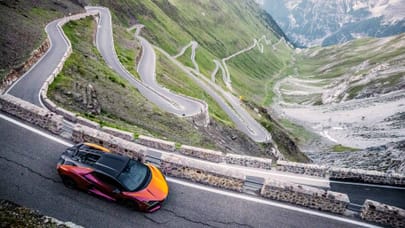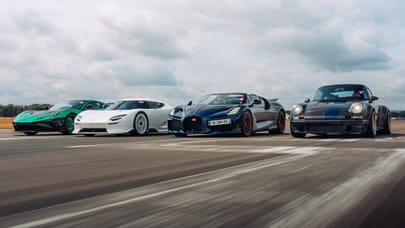
Porsche 917 news - Four decades of cool - 2009
Time for a history lesson, boys and girls. So open your textbooks and let's begin.
It's 40 years since Porsche gave us the 917, one of the coolest, quickest
racing cars ever made. If you're too young to remember it or not beardy enough
to know, the 917 won Le Mans in 1970, and again in '71 - the same year it was
immortalised in Steve McQueen's film about the race.
But the 917 didn't just win - lots of
cars have done that. It was the way it did it. In 1971 it set a record 138mph
lap, which no car has ever beaten since the organisers plonked a chicane on the
Mulsanne straight. And talking of the Mulsanne, Vic Elford drove his 917 to
240mph along the 3.5-mile straight in 1970, in the rain, at night, which pretty
much blew the opposition far into the French countryside.
So how did it all come about? Believe it or not, it's all thanks to the FIA. In
1969, it changed the rules to allow smaller engines into the World Sports Car
Championship (up until then, cars like the Ford GT40 with its massive V8 were
the kings) and attract new teams to the grid. But the cars also had to be
homologated. In other words, they had to be built and sold to regular
customers for road use, too. As long as a manufacturer built at least 25 cars
for road use, they could take it racing.
So Porsche got to work. The 917 was given an unusual 4.5-litre, flat
12-cylinder engine, good for about 520bhp, 0-60 in around 2.5 seconds and a top
speed approaching 250mph. Gulp. The engine was sunk into a chassis made from tubular
aluminium (magnesium on later cars), and everything was wrapped up in
lightweight glassfibre.
There were a few different body styles, designed to take on different circuits.
Need something to demolish a tight and twisty track? Pick the short tail. Wanna
nail Le Mans? Get yourself a long tail. But what made the 917 stick in the mind
was its crazy array of paintjobs. You can't help but think of one in classic
Gulf colours, which is how it looked best. But there were others, including a
mad, psychedelic ‘hippie car' (designed by the guys at Martini Racing who were
clearly on acid) and a fetching pink car, nicknamed the ‘pig'.
In a very short time, the cars dominated the world sports car scene. Aside from
blitzing Le Mans, it was impressive at Daytona, on the Targa Florio and at the
Österreichring (which is somewhere scary in Austria, apparently).
And then things got really wild. When the FIA gave up on its new regs at the
end of '71, Porsche took the car Stateside and entered it into the CanAm
championship - a mad, bad, utterly insane and liberally regulated series full
of massively powerful machinery. Porsche modified the 917 to become the 917/10,
which had about 1,000bhp and promptly obliterating the opposition. It won the
championship, came back with a 1,500bhp(!) car the next season and won it
again, before the FIA had to change the rules to give others a chance. Boo.
So there you have it: the Porsche 917, probably the greatest racing car ever.
If you disagree, let us know why in the comments bit below...
Top Gear
Newsletter
Thank you for subscribing to our newsletter. Look out for your regular round-up of news, reviews and offers in your inbox.
Get all the latest news, reviews and exclusives, direct to your inbox.
Trending this week
- Car Review
Ferrari 296 Speciale
- Top Gear's Top 9
Here are nine very optimistically-named caravans








